64 papers:
 CSCW-2015-TorkilsheyggiH
CSCW-2015-TorkilsheyggiH- Visible but Unseen?: A Workplace Study of Blood-Test Icons on Electronic Emergency-Department Whiteboards (AáT, MH), pp. 798–807.
 DUXU-DD-2015-ChenXNWZS #behaviour #research #semantics
DUXU-DD-2015-ChenXNWZS #behaviour #research #semantics- Semantic Research of Military Icons Based on Behavioral Experiments and Eye-Tracking Experiments (XJC, CX, YN, HW, JZ, JS), pp. 24–31.
 CHI-2014-SetlurM #automation #encoding #generative #semantics #visualisation
CHI-2014-SetlurM #automation #encoding #generative #semantics #visualisation- Automatic generation of semantic icon encodings for visualizations (VS, JDM), pp. 541–550.
 DUXU-DI-2014-StickelPM #design
DUXU-DI-2014-StickelPM #design- Cutting Edge Design or a Beginner’s Mistake? — A Semiotic Inspection of iOS7 Icon Design Changes (CS, HMP, JTM), pp. 358–369.
 DUXU-DP-2014-ItoHN #design #interface #social #using
DUXU-DP-2014-ItoHN #design #interface #social #using- Throwing a Smile: Using Smile Icons to Design Social Interfaces (KI, SH, SN), pp. 297–307.
 HCI-AIMT-2014-SterkenburgJP #design
HCI-AIMT-2014-SterkenburgJP #design- Auditory Emoticons: Iterative Design and Acoustic Characteristics of Emotional Auditory Icons and Earcons (JS, MJ, CP), pp. 633–640.
 HIMI-AS-2014-LinLLL #case study #design #functional #interface #navigation
HIMI-AS-2014-LinLLL #case study #design #functional #interface #navigation- A Study on the Interface Design of a Functional Menu and Icons for In-Vehicle Navigation Systems (MCL, YHL, CCL, JYL), pp. 261–272.
 ICPR-2014-CadoniLG #case study #comparative #multimodal #recognition
ICPR-2014-CadoniLG #case study #comparative #multimodal #recognition- Iconic Methods for Multimodal Face Recognition: A Comparative Study (MC, AL, EG), pp. 4612–4617.
 CHI-2013-BohmerK #case study #smarttech
CHI-2013-BohmerK #case study #smarttech- A study on icon arrangement by smartphone users (MB, AK), pp. 2137–2146.
 HCI-AMTE-2013-McDougallR #predict
HCI-AMTE-2013-McDougallR #predict- Ease of Icon Processing Can Predict Icon Appeal (SM, IR), pp. 575–584.
 HCI-IMT-2013-HwangK #design
HCI-IMT-2013-HwangK #design- Preliminary Design of Haptic Icons from Users (WH, DK), pp. 587–593.
 HCI-IMT-2013-MurataHS #interface #video
HCI-IMT-2013-MurataHS #interface #video- Effect of Unresponsive Time for User’s Touch Action of Selecting an Icon on the Video Mirror Interface (KM, MH, YS), pp. 462–468.
 HCI-UC-2013-BrohlBJS #design #project management
HCI-UC-2013-BrohlBJS #design #project management- Icon Design for Older Users of Project Management Software (CB, JB, NJ, CMS), pp. 127–135.
 HIMI-D-2013-MaC #semantics
HIMI-D-2013-MaC #semantics- Semantically Structured VDL-Based Iconic Tags System (XM, JPC), pp. 465–474.
 HIMI-HSM-2013-ChenHCK #design #network #social #usability
HIMI-HSM-2013-ChenHCK #design #network #social #usability- Usability Study of Icon Designs with Social Network Functions (CHC, WHH, SCC, YYK), pp. 355–362.
 CHI-2012-DaviesB #mobile
CHI-2012-DaviesB #mobile- The case of the missed icon: change blindness on mobile devices (TD, AKB), pp. 1451–1460.
 HCI-DDA-2011-LiangL #axiom #design
HCI-DDA-2011-LiangL #axiom #design- Axiomatic Design for Biometric Icons (SFML, CTL), pp. 98–106.
 CHI-2010-ChengLCLK #named
CHI-2010-ChengLCLK #named- iCon: utilizing everyday objects as additional, auxiliary and instant tabletop controllers (KYC, RHL, BYC, RHL, SYK), pp. 1155–1164.
 CHI-2009-GarzonisJJO #mobile
CHI-2009-GarzonisJJO #mobile- Auditory icon and earcon mobile service notifications: intuitiveness, learnability, memorability and preference (SG, SLJ, TJ, EO), pp. 1513–1522.
 HCI-NT-2009-AkasakaO #performance
HCI-NT-2009-AkasakaO #performance- Providing an Efficient Way to Make Desktop Icons Visible (TA, YO), pp. 569–578.
 HCI-NT-2009-AlacamD #eye tracking #representation #usability
HCI-NT-2009-AlacamD #eye tracking #representation #usability- A Usability Study of WebMaps with Eye Tracking Tool: The Effects of Iconic Representation of Information (ÖA, MD), pp. 12–21.
 HCI-NT-2009-LinHYTS #usability
HCI-NT-2009-LinHYTS #usability- Comparing the Usability of the Icons and Functions between IE6.0 and IE7.0 (CJL, MCH, HCY, PJT, WJS), pp. 465–473.
 HCI-NT-2009-YoonSYSH #evaluation #interface #usability
HCI-NT-2009-YoonSYSH #evaluation #interface #usability- A Usability Evaluation of Public Icon Interface (SY, JS, JY, SS, TDH), pp. 540–546.
 IDGD-2009-RizvanogluO #case study #comprehension
IDGD-2009-RizvanogluO #case study #comprehension- Cross-Cultural Understanding of the Dual Structure of Metaphorical Icons: An Explorative Study with French and Turkish Users on an E-Learning Site (KR, ÖÖ), pp. 89–98.
 HCI-IPT-2007-AuerD #difference
HCI-IPT-2007-AuerD #difference- When Does a Difference Make a Difference? A Snapshot on Global Icon Comprehensibility (SA, ED), pp. 3–12.
 HCI-IPT-2007-ChungCHL #gender #mobile #recognition
HCI-IPT-2007-ChungCHL #gender #mobile #recognition- The Effects of Gender Culture on Mobile Phone Icon Recognition (SC, CC, XH, JJL), pp. 252–259.
 HCI-IPT-2007-DengZTDW #documentation #what
HCI-IPT-2007-DengZTDW #documentation #what- Improving Document Icon to Re-find Efficiently What You Need (CD, MZ, FT, GD, HW), pp. 49–52.
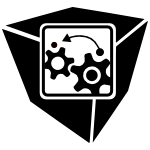 SOFTVIS-2006-Jucknath-JohnG #evolution #graph #modelling #scalability #visualisation
SOFTVIS-2006-Jucknath-JohnG #evolution #graph #modelling #scalability #visualisation- Icon graphs: visualizing the evolution of large class models (SJJ, DG), pp. 167–168.
 SAC-2006-ZhouAL #database #image #interactive #retrieval #similarity #using
SAC-2006-ZhouAL #database #image #interactive #retrieval #similarity #using- Dynamic interactive spatial similarity retrieval in iconic image databases using enhanced digraph (XMZ, CHA, TWL), pp. 46–51.
 ITiCSE-2005-ChenM #java #programming
ITiCSE-2005-ChenM #java #programming- Iconic programming for flowcharts, java, turing, etc (SC, SM), pp. 104–107.
 ITiCSE-2005-CilliersCG #programming
ITiCSE-2005-CilliersCG #programming- The effect of integrating an Iconic programming notation into CS1 (CC, APC, JHG), pp. 108–112.
 SEKE-2005-LiCC
SEKE-2005-LiCC- Face Alive Icons (XL, CCC, SKC), pp. 29–36.
 CHI-2004-EverettB #visual notation
CHI-2004-EverettB #visual notation- Unintended effects: varying icon spacing changes users’ visual search strategy (SPE, MDB), pp. 695–702.
 ICPR-v1-2000-SalousPC #image #modelling #segmentation
ICPR-v1-2000-SalousPC #image #modelling #segmentation- Iconic Modeling for the Progressive Transmission of Neurological Images: Segmentation (MNS, DP, GSC), pp. 1512–1515.
 HCI-EI-1999-KotaniH
HCI-EI-1999-KotaniH- Relationship between Size of Icons and Mouse Operating Force with Complex Actions during Pointing Tasks (KK, KH), pp. 412–415.
 HCI-EI-1999-Lin #difference #recognition
HCI-EI-1999-Lin #difference #recognition- Cultural Differences in Icon Recognition (RL), pp. 725–729.
 HCI-EI-1999-SiioM #named
HCI-EI-1999-SiioM #named- IconStickers: Converting Computer Icons into Real Paper Icons (IS, YM), pp. 271–275.
 CIKM-1999-KimSC #database #image #ranking #representation
CIKM-1999-KimSC #database #image #ranking #representation- Spatial Match Representation Scheme Supporting Ranking in Iconic Images Databases (YJK, CBS, JWC), pp. 450–457.
 CHI-1997-WordenWBH
CHI-1997-WordenWBH- Making Computers Easier for Older Adults to Use: Area Cursors and Sticky Icons (AW, NW, KB, SEH), pp. 266–271.
 HCI-CC-1997-PiamonteOA
HCI-CC-1997-PiamonteOA- Evaluating Telecom Icons Among Asian Countries (DPP, KO, JDAA), pp. 169–172.
 HCI-CC-1997-SiauN #case study
HCI-CC-1997-SiauN #case study- An Experimental Study on User Interpretation of Icons (KS, FFHN), pp. 721–724.
 HCI-CC-1997-SmithS
HCI-CC-1997-SmithS- The Acceptability of Icons Across Countries (JAS, MPS), pp. 177–180.
 HCI-SEC-1997-BoussoffaraE #interface #process
HCI-SEC-1997-BoussoffaraE #interface #process- Reducing Operator Mental Load Through Dynamic Icons Interfaces and Process Notice (BB, PFE), pp. 391–394.
 CIKM-1997-ChangKC #database #image #query #representation
CIKM-1997-ChangKC #database #image #query #representation- A Spatial Match Representation Scheme for Indexing and Querying in Iconic Image Databases (JWC, YJK, KJC), pp. 169–176.
 ICPR-1996-Ben-ArieWR #invariant #recognition
ICPR-1996-Ben-ArieWR #invariant #recognition- Iconic recognition with affine-invariant spectral signatures (JBA, ZW, KRR), pp. 672–676.
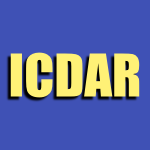 ICDAR-v2-1995-Peairs
ICDAR-v2-1995-Peairs- Iconic paper (MP), pp. 1174–1179.
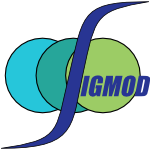 SIGMOD-1995-MassariPSC #named #query
SIGMOD-1995-MassariPSC #named #query- QBI: Query By Icons (AM, SP, LS, PKC), p. 477.
 TOOLS-EUROPE-1994-Weck
TOOLS-EUROPE-1994-Weck- Putting Icons into (Con-)Text (WW), pp. 49–60.
 HCI-SHI-1993-FullertonH #education
HCI-SHI-1993-FullertonH #education- A User-Oriented Test of Icons in an Educational Software Product (SF, AJH), pp. 44–49.
 HCI-SHI-1993-MorimotoKN #human-computer #interactive #representation
HCI-SHI-1993-MorimotoKN #human-computer #interactive #representation- Dynamic Representation of Icons in Human-Computer Interaction (KM, TK, TN), pp. 38–43.
 HCI-SHI-1993-ZhanBR #design #layout #semantics
HCI-SHI-1993-ZhanBR #design #layout #semantics- Screen Layout and Semantic Structure in Iconic Menu Design (PZ, RRB, MWR), pp. 146–151.
 INTERCHI-1993-Byrne #documentation #using
INTERCHI-1993-Byrne #documentation #using- Using icons to find documents: simplicity is critical (MDB), pp. 446–453.
 INTERCHI-1993-Gaver
INTERCHI-1993-Gaver- Synthesizing auditory icons (WWG), pp. 228–235.
 INTERCHI-1993-TonomuraAOS #tool support #video
INTERCHI-1993-TonomuraAOS #tool support #video- VideoMAP and VideoSpaceIcon: tools for anatomizing video content (YT, AA, KO, TS), pp. 131–136.
 SEKE-1992-Olson #analysis #interface #object-oriented
SEKE-1992-Olson #analysis #interface #object-oriented- An Object-Oriented Analysis Model of an Iconic Interface to Macsyma (AMO), pp. 253–260.
 CHI-1991-BaeckerSM
CHI-1991-BaeckerSM- Bringing icons to life (RB, ISS, RM), pp. 1–6.
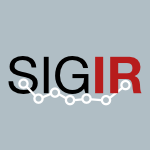 SIGIR-1989-Pejtersen #analysis #information retrieval #interface #library
SIGIR-1989-Pejtersen #analysis #information retrieval #interface #library- A Library System for Information Retrieval Based on a Cognitive Task Analysis and Supported by an Icon-Based Interface (AMP), pp. 40–47.
 ICSE-1988-Fonorow #modelling #tool support
ICSE-1988-Fonorow #modelling #tool support- Modeling Software Tools with Icon (ORF), pp. 202–221.
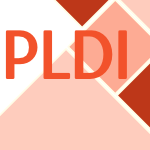 PLDI-1987-OBagyG #interpreter #programming language #recursion
PLDI-1987-OBagyG #interpreter #programming language #recursion- A recursive interpreter for the Icon programming language (JO, REG), pp. 138–149.
 HCI-SES-1987-WoodW
HCI-SES-1987-WoodW- Icons in Everyday Life (WTW, SKW), pp. 97–104.
 OOPSLA-1987-Gutfreund
OOPSLA-1987-Gutfreund- ManiplIcons in ThinkerToy (SHG), pp. 307–317.
 SIGMOD-1986-FrassonE
SIGMOD-1986-FrassonE- Principles of an Icons-Based Command Language (CF, MEr), pp. 144–152.
 ICSE-1985-BuhrWKLL #design #multi #prolog #tool support
ICSE-1985-BuhrWKLL #design #multi #prolog #tool support- Experiments with Prolog Design Descriptions and Tools in CAEDE: An Iconic Design Environment for Multitasking, Embdedded Systems (RJAB, CMW, GMK, KVDL, DGL), pp. 62–67.
 LFP-1984-Griswold #evaluation #programming language
LFP-1984-Griswold #evaluation #programming language- Expression Evaluation in the ICON Programming Language (REG), pp. 177–183.
 CSCW-2015-TorkilsheyggiH
CSCW-2015-TorkilsheyggiH DUXU-DD-2015-ChenXNWZS #behaviour #research #semantics
DUXU-DD-2015-ChenXNWZS #behaviour #research #semantics CHI-2014-SetlurM #automation #encoding #generative #semantics #visualisation
CHI-2014-SetlurM #automation #encoding #generative #semantics #visualisation DUXU-DI-2014-StickelPM #design
DUXU-DI-2014-StickelPM #design DUXU-DP-2014-ItoHN #design #interface #social #using
DUXU-DP-2014-ItoHN #design #interface #social #using HCI-AIMT-2014-SterkenburgJP #design
HCI-AIMT-2014-SterkenburgJP #design HIMI-AS-2014-LinLLL #case study #design #functional #interface #navigation
HIMI-AS-2014-LinLLL #case study #design #functional #interface #navigation ICPR-2014-CadoniLG #case study #comparative #multimodal #recognition
ICPR-2014-CadoniLG #case study #comparative #multimodal #recognition CHI-2013-BohmerK #case study #smarttech
CHI-2013-BohmerK #case study #smarttech HCI-AMTE-2013-McDougallR #predict
HCI-AMTE-2013-McDougallR #predict HCI-IMT-2013-HwangK #design
HCI-IMT-2013-HwangK #design HCI-IMT-2013-MurataHS #interface #video
HCI-IMT-2013-MurataHS #interface #video HCI-UC-2013-BrohlBJS #design #project management
HCI-UC-2013-BrohlBJS #design #project management HIMI-D-2013-MaC #semantics
HIMI-D-2013-MaC #semantics HIMI-HSM-2013-ChenHCK #design #network #social #usability
HIMI-HSM-2013-ChenHCK #design #network #social #usability CHI-2012-DaviesB #mobile
CHI-2012-DaviesB #mobile HCI-DDA-2011-LiangL #axiom #design
HCI-DDA-2011-LiangL #axiom #design CHI-2010-ChengLCLK #named
CHI-2010-ChengLCLK #named CHI-2009-GarzonisJJO #mobile
CHI-2009-GarzonisJJO #mobile HCI-NT-2009-AkasakaO #performance
HCI-NT-2009-AkasakaO #performance HCI-NT-2009-AlacamD #eye tracking #representation #usability
HCI-NT-2009-AlacamD #eye tracking #representation #usability HCI-NT-2009-LinHYTS #usability
HCI-NT-2009-LinHYTS #usability HCI-NT-2009-YoonSYSH #evaluation #interface #usability
HCI-NT-2009-YoonSYSH #evaluation #interface #usability IDGD-2009-RizvanogluO #case study #comprehension
IDGD-2009-RizvanogluO #case study #comprehension HCI-IPT-2007-AuerD #difference
HCI-IPT-2007-AuerD #difference HCI-IPT-2007-ChungCHL #gender #mobile #recognition
HCI-IPT-2007-ChungCHL #gender #mobile #recognition HCI-IPT-2007-DengZTDW #documentation #what
HCI-IPT-2007-DengZTDW #documentation #what SOFTVIS-2006-Jucknath-JohnG #evolution #graph #modelling #scalability #visualisation
SOFTVIS-2006-Jucknath-JohnG #evolution #graph #modelling #scalability #visualisation SAC-2006-ZhouAL #database #image #interactive #retrieval #similarity #using
SAC-2006-ZhouAL #database #image #interactive #retrieval #similarity #using ITiCSE-2005-ChenM #java #programming
ITiCSE-2005-ChenM #java #programming ITiCSE-2005-CilliersCG #programming
ITiCSE-2005-CilliersCG #programming SEKE-2005-LiCC
SEKE-2005-LiCC CHI-2004-EverettB #visual notation
CHI-2004-EverettB #visual notation ICPR-v1-2000-SalousPC #image #modelling #segmentation
ICPR-v1-2000-SalousPC #image #modelling #segmentation HCI-EI-1999-KotaniH
HCI-EI-1999-KotaniH HCI-EI-1999-Lin #difference #recognition
HCI-EI-1999-Lin #difference #recognition HCI-EI-1999-SiioM #named
HCI-EI-1999-SiioM #named CIKM-1999-KimSC #database #image #ranking #representation
CIKM-1999-KimSC #database #image #ranking #representation CHI-1997-WordenWBH
CHI-1997-WordenWBH HCI-CC-1997-PiamonteOA
HCI-CC-1997-PiamonteOA HCI-CC-1997-SiauN #case study
HCI-CC-1997-SiauN #case study HCI-CC-1997-SmithS
HCI-CC-1997-SmithS HCI-SEC-1997-BoussoffaraE #interface #process
HCI-SEC-1997-BoussoffaraE #interface #process CIKM-1997-ChangKC #database #image #query #representation
CIKM-1997-ChangKC #database #image #query #representation ICPR-1996-Ben-ArieWR #invariant #recognition
ICPR-1996-Ben-ArieWR #invariant #recognition ICDAR-v2-1995-Peairs
ICDAR-v2-1995-Peairs SIGMOD-1995-MassariPSC #named #query
SIGMOD-1995-MassariPSC #named #query TOOLS-EUROPE-1994-Weck
TOOLS-EUROPE-1994-Weck HCI-SHI-1993-FullertonH #education
HCI-SHI-1993-FullertonH #education HCI-SHI-1993-MorimotoKN #human-computer #interactive #representation
HCI-SHI-1993-MorimotoKN #human-computer #interactive #representation HCI-SHI-1993-ZhanBR #design #layout #semantics
HCI-SHI-1993-ZhanBR #design #layout #semantics INTERCHI-1993-Byrne #documentation #using
INTERCHI-1993-Byrne #documentation #using INTERCHI-1993-Gaver
INTERCHI-1993-Gaver INTERCHI-1993-TonomuraAOS #tool support #video
INTERCHI-1993-TonomuraAOS #tool support #video SEKE-1992-Olson #analysis #interface #object-oriented
SEKE-1992-Olson #analysis #interface #object-oriented CHI-1991-BaeckerSM
CHI-1991-BaeckerSM SIGIR-1989-Pejtersen #analysis #information retrieval #interface #library
SIGIR-1989-Pejtersen #analysis #information retrieval #interface #library ICSE-1988-Fonorow #modelling #tool support
ICSE-1988-Fonorow #modelling #tool support PLDI-1987-OBagyG #interpreter #programming language #recursion
PLDI-1987-OBagyG #interpreter #programming language #recursion HCI-SES-1987-WoodW
HCI-SES-1987-WoodW OOPSLA-1987-Gutfreund
OOPSLA-1987-Gutfreund SIGMOD-1986-FrassonE
SIGMOD-1986-FrassonE ICSE-1985-BuhrWKLL #design #multi #prolog #tool support
ICSE-1985-BuhrWKLL #design #multi #prolog #tool support LFP-1984-Griswold #evaluation #programming language
LFP-1984-Griswold #evaluation #programming language









